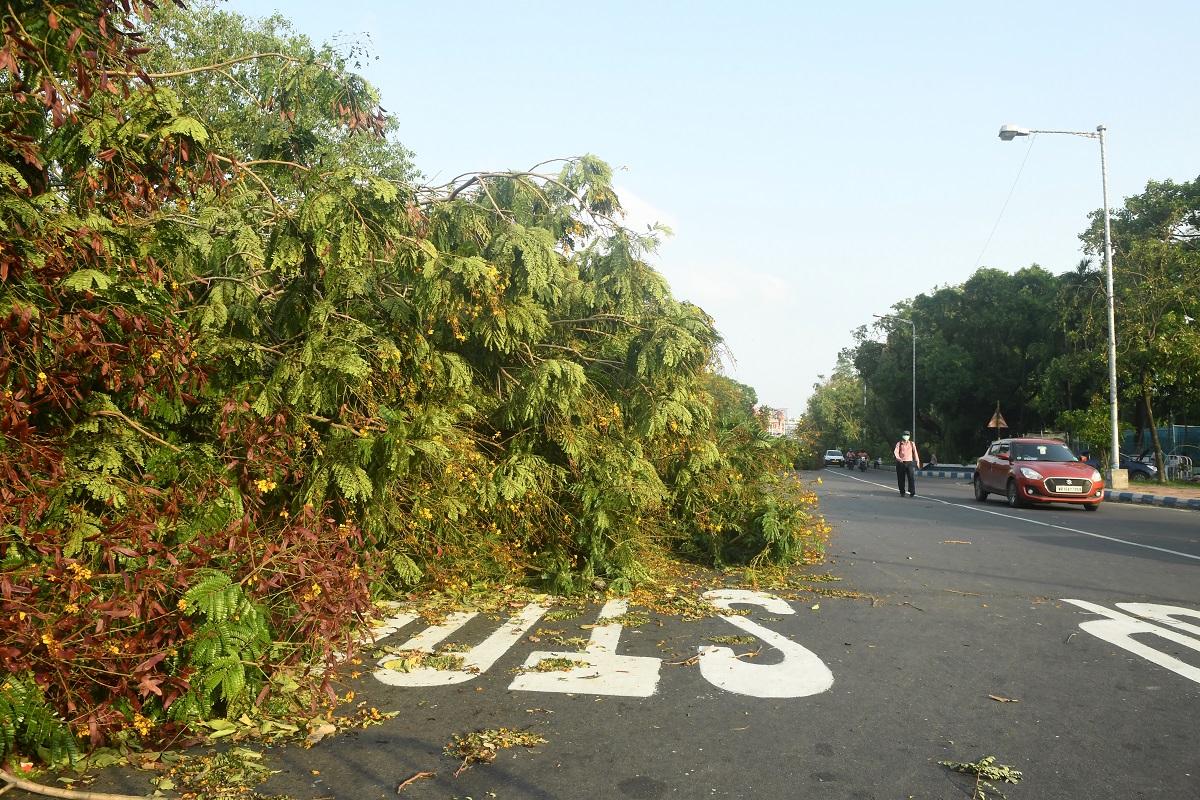While greenery is good for mankind and to reduce earth’s temperature, it at times can also be a hurdle to life in the city. Durgapur residents are finding it the hard way as the city is facing frequent blackouts due to uprooting of trees or branches breaking and falling on electric poles. With the electric poles being affected and disruption in electric wires, power distribution authorities are in for trouble in between the parched summer days.
Why are the trees in Asansol and Durgapur, where more plantation is required, posing hurdles to power supply so frequently, the residents are trying to find out. Is it because of human error or soil erosion or desperately gravitropism of the casually planted trees, they wonder.
Advertisement
Gravitropism is an integral part of a plant, its growth orienting it’s strong foundation on the surface.
Hundreds of uprooted trees and their branches fall on the power transmission and distribution networks causing severe interruption to power supply for prolonged hours in several sectors in the district. It was evident after last Wednesday’s gusty winds.
Almost 70 per cent of supply though could be restored by midnight, it took another 20 hours to bring respite for the rest of the localities. Sohail Hossen, divisional manager, West Bengal State Electricity Distribution Company in Durgapur said, “Trees falling on the live power networks has become a perennial crisis here these days. We maintain regular trimming of the branches but the strong winds took a severe toll on our services.” In his command area only, 98 big trees were uprooted, besides, 30 in Durgapur Steel Township areas. The average 4kmph wind speed suddenly escalated to 60kmph accompanied by repeated gusting thrusts from the south east during a norwester inviting the menacing trouble, opined Sourabh Chatterjee, SDM, Durgapur.
Trees with shallow root systems are always vulnerable to the external stresses like strong wind, heavy rainfall but the city was surprised how and why wind with much lower intensity can be catastrophic and dismantle the trees. “At 47 to 54kmph wind speed, light structural damages in trees occur, but at 55 to 63kmph the entire tree can be uprooted with considerable damage,” said Prof Uma Dey, a Botanist in Andal, adding, “Soil erosion alongside lack of gravitation due to desperate digging surrounding root system are responsible for weakening stem and root system of plants here.” Besides, large codominant stems, improper pruning are more vulnerable to wind damage, she opined.
Shallow roots provide less resistance against the wind forces, but external injuries caused by human activities or disease uproot trees easily, stated Anupam Khan, DFO, Durgapur. He said, “After receiving complaints of human interference, we’d forwarded letters to the Durgapur Steel Plant authorities, the Durgapur Municipal Corporation and the Asansol Durgapur Development Authority to strengthen vigil on this.” Trees becoming top-heavy due to surge of saps or dearth of proper trimming fall quickly in storm-hit areas.
The WBSEDCL complained that heavily burdened tops of old trees have lent maximum trouble for the power transmission and distribution networks. “The civic body doesn’t bother to trim trees,” said the officials. “We’ve restrained voluntary efforts after the forest department issued a structure to us last year about felling of trees,” said Dharmendra Yadav, administrator, DMC. He added, “We’ve however extended logistic support to the power department for the purpose.”
Irregularities in trimming have also intensified the problem, a section of the power department officials claimed. The trees touching the bare conductors of high-voltage power networks inevitably invite short-circuit. The divisional forest authorities allowed DSP for trimming of 200 trees and the WBSEDCL to trim 154 trees, recently. The West Burdwan district accommodates forest patches of 4963.207 hectares, which is just 4 per cent of the required forest zone to combat air pollution. The city requires at least 33 per cent green coverage, the forest officials said.











